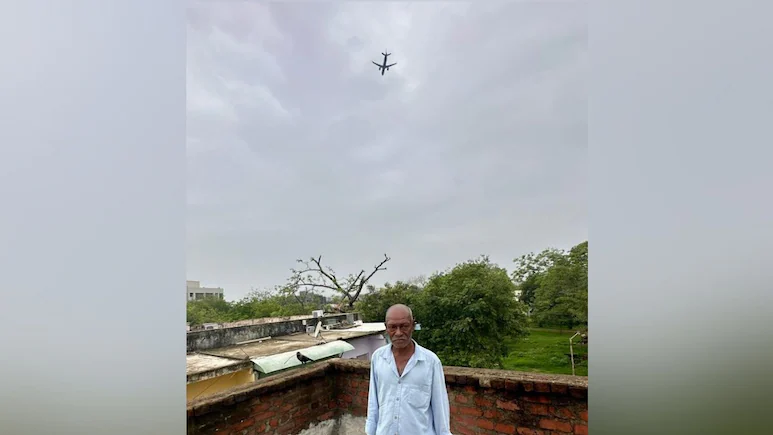Community Stunned by Air India Flight Tragedy: Seeking Help and Relocation
The lives of residents living around the Sardar Vallabhbhai Patel International Airport in Ahmedabad, India, have been drastically altered following the harrowing crash of Air India flight AI-171, which occurred on June 12. The flight, which was bound for London, went down just 20 meters from residential homes, resulting in devastating consequences for both passengers and local inhabitants. Tragically, all but one passenger lost their lives, along with nearly 29 people on the ground, when the plane crashed into the BJ Medical College hostel complex immediately after take-off.
Residents of the Gujarat Housing Board in Meghaninagar, the area closest to the crash site, are grappling with emotional and psychological scars that continue to torment them. As each day passes since that fateful incident, these community members have found it increasingly challenging to cope, dealing with fear, insomnia, and anxiety.
The psychological ramifications are profound, with reports suggesting that many families have not had a peaceful night’s sleep in the weeks since the tragedy. “We are scared. We want to be relocated somewhere else, or the planes should be flown via another route,” said Kishanbhai, a local resident who sustained burns as he fled the scene in panic. His wife, Maniben, echoed the sentiment, emphasizing the collective fear now clinging to their everyday lives.
Enduring Fear and Anxiety: The Aftermath of Trauma
The traumatic experience has left residents in constant dread, as the sound of planes flying overhead has become a visceral reminder of their recent trauma. Hundreds of flights use the airspace above their homes daily, and for many, the daily rhythm that once included the drone of aircraft has morphed into a source of anxiety. “It was a regular sound for us, but now it’s associated with fear. I tremble with fear every time a flight passes by,” shared Sonalben, who lives in the housing society with her family.
In this troubled community, psychological distress extends beyond mere fear. Children are particularly vulnerable, displaying symptoms of terror that manifest in crying fits at night due to the sound of passing aircraft. “There are more than 40 children in my building, and most of them start crying at night after hearing the sound of planes since the crash,” said Birendra Trivedi, detailing the emotional toll on families.
Despite some residents attempting to rationalize the incident as an unfortunate accident, the psychological burden remains heavy. “It was an accident. It won’t happen every day,” noted Vikram Singh Parmar, a local grocery shop owner. However, the echoes of that day linger, with many families in the area yearning for greater assurances regarding their safety.
Community Support Needed to Manage Trauma
Medical experts recognize that the road to recovery for residents enduring such trauma will be long and complex, emphasizing the necessity for psychological support. Dr. Dhruv Raval, a psychiatrist based in Ahmedabad, stated, “Living near a crash site can lead to intense distress, even among those not directly involved.” He elaborated on the mental health crisis, highlighting symptoms such as panic attacks, flashbacks, excessive sweating, and a general feeling of anxiety.
To address these psychological issues, a multifaceted approach is essential. The community’s healing might require normalizing emotional responses, utilizing support from peers, and engaging in community-driven efforts for recovery. Mental health interventions, such as trauma-informed therapy and grief counseling, are highly recommended to assist residents in navigating their emotional responses to this tragedy. “Trauma-focused cognitive behavioral therapy may be particularly beneficial for children to process memories and rebuild their sense of safety,” Dr. Raval advised.
As per the report by The Hindu, various government and private helplines have circulated counseling numbers, which have received calls from people directly impacted. However, there remains a pressing need for outreach initiatives focused on the broader community residing near the crash site.
Conclusion: A Community United in Recovery
In this turbulent time, it is crucial for both local authorities and medical professionals to collaborate on strategies and programs that directly address the psychological needs of those affected. Community healing efforts, memorials to honor those lost, and support groups can foster resilience within the community.
Moreover, there is an urgent need for a reassessment of flight paths in order to ensure the safety of residents living near airports. Individuals like Kishanbhai and Maniben are calling for a crucial change: a better understanding of their fear and a more immediate response to their needs. As the aftermath of the Air India tragedy continues to unfold, the local community remains united in their quest for healing, stability, and security.
For more information on coping strategies for trauma and anxiety, visit our resources on mental health support and community resources.
DISCLAIMER
We have taken every measure to ensure that the information in this article and on our social media platforms is accurate, verified, and obtained from reliable sources. For feedback or complaints, please contact us at info@hamslive.com.


